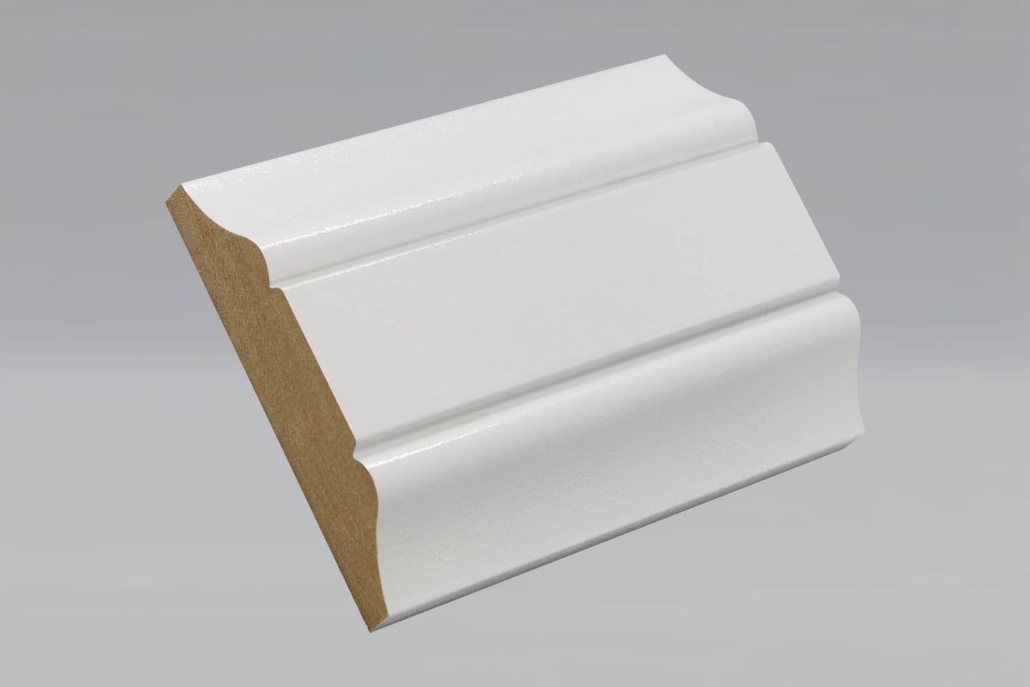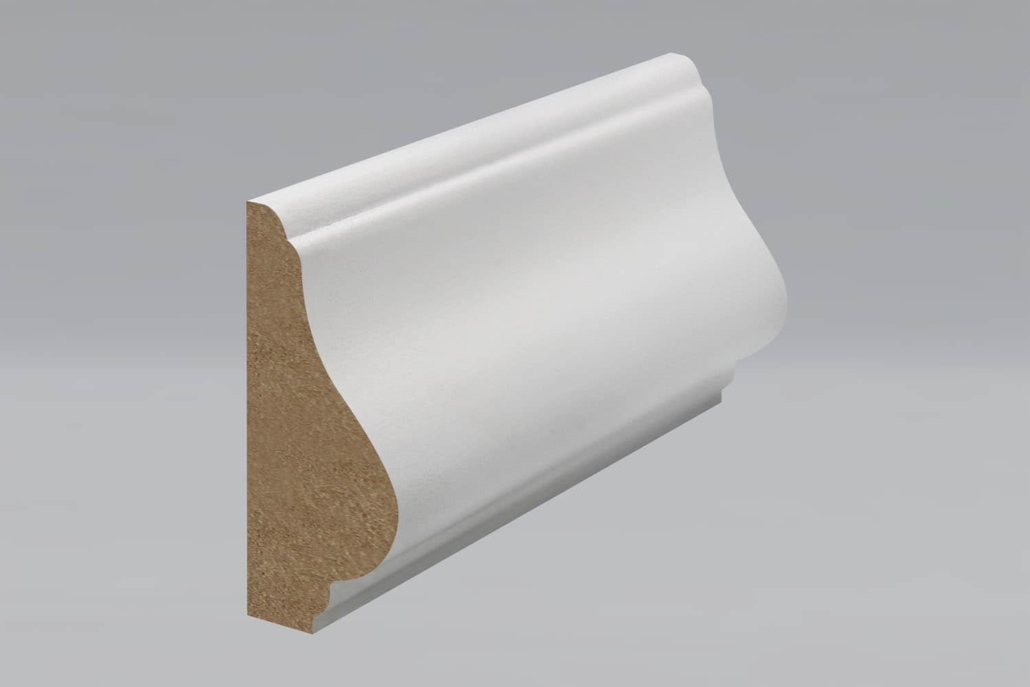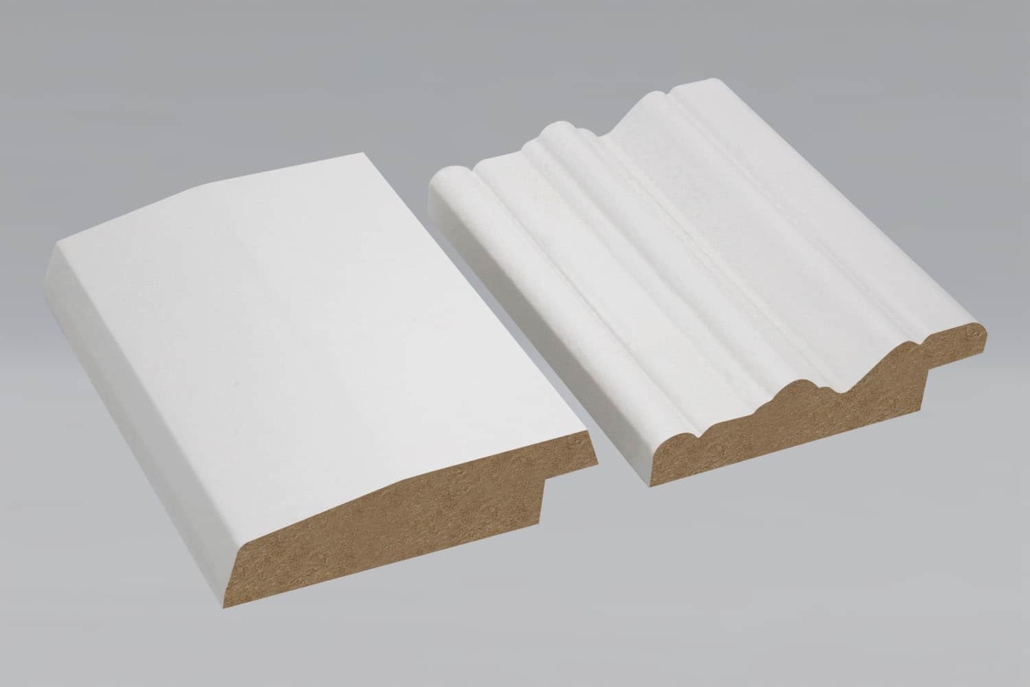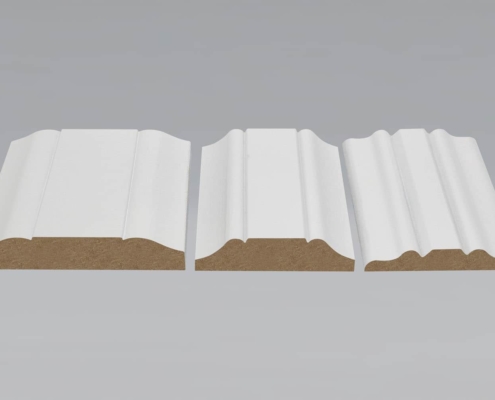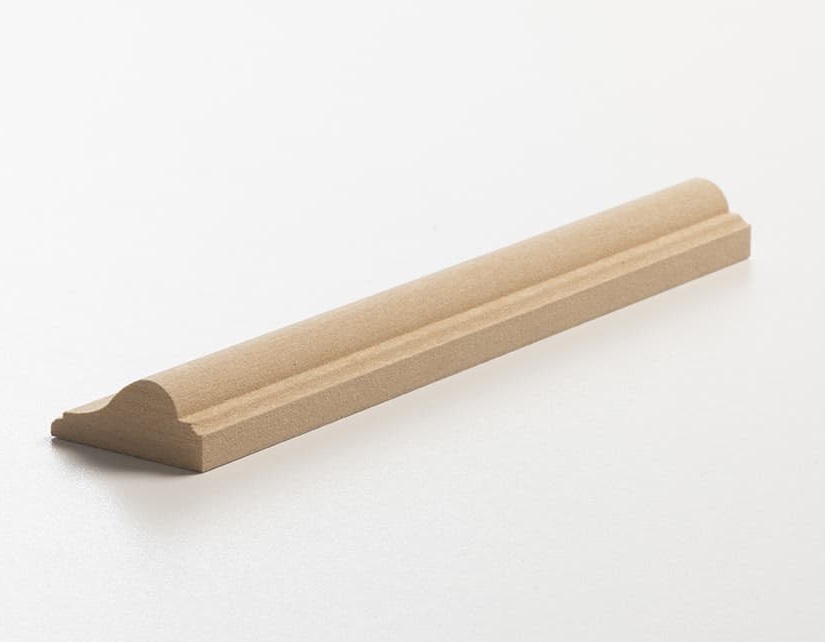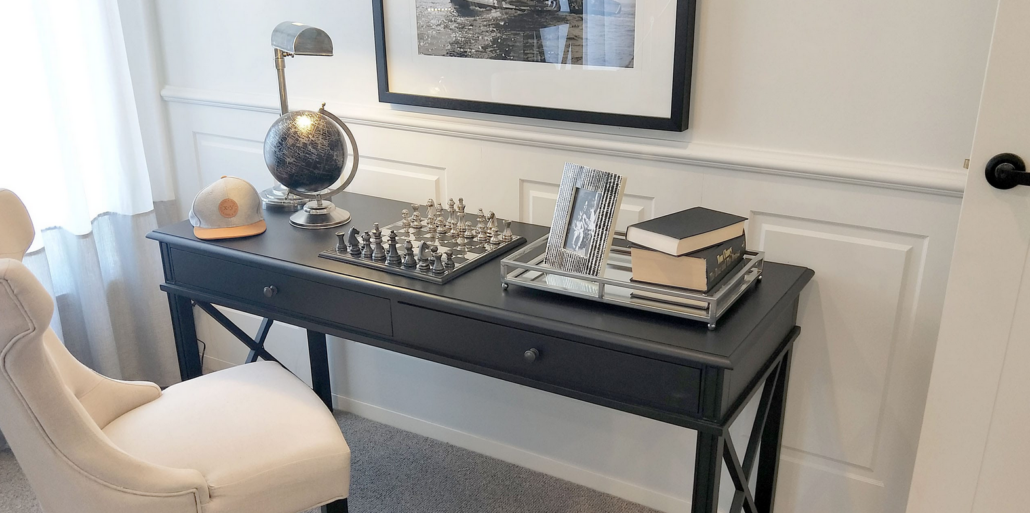Dado Rail, Chair Rail, Belt Rail Mouldings
Dado rails, chair rails, and belt rails are horizontal wall mouldings designed to add style, proportion, and protection. These versatile mouldings run along the wall at various heights, helping to define spaces, protect surfaces from damage, and enhance the overall look of a room.
At Colonial Wall Linings, we offer an extensive range of high-quality MDF decorative dado, chair, and belt rail mouldings, designed to suit various interior styles and needs. Our expert craftsmanship ensures you get durable, beautifully crafted products every time.
Browse our selection below and find the perfect moulding to complete your space.
Skirting & Architraves – Stock Items Shown
Custom widths up to 240mm Made to Order
Belt Rail Moulding
This moulding adds a distinctive touch to your walls, offering structural support and aesthetic appeal. Traditionally used in Queenslander homes to keep VJ boards straight, today’s belt rail moulding maintains the classic charm while serving as a stylish decorative feature. Suitable for enhancing any interior space, it complements modern and heritage designs.
Bolection Mould
Bolection brings a touch of timeless elegance to your interiors with its ornate, classic design. Originally used to frame intricate wood panelling and decorative features, this moulding is ideal for creating sophisticated visual interest and adding a sense of grandeur to your walls. Its versatile style complements traditional and contemporary decor, making it a versatile choice for enhancing any space.
Rebated Dado
Rebated Dado moulding combines classic charm with functional design. Its distinctive rebate detail adds a refined touch to walls while providing a practical solution for concealing transitions between panels or finishes. Ideal for both traditional and modern settings, this moulding offers a stylish way to protect your walls and enhance your room’s aesthetic. The Rebated Dado seamlessly integrates with various decor styles, adding depth and character to interiors.
Wainscoting Belt Rail Moulding
Designed to complement traditional wainscoting, this moulding provides a classic finish that enhances the visual appeal of any room. It offers a stylish border to your wall panels, elevating both the aesthetic and protective qualities of your space. Perfect for adding a touch of sophistication to entryways, hallways, and living areas, the Wainscoting Belt Rail Moulding is a versatile choice for achieving a refined look.
What Our Customers Say
The Purpose Behind Dado, Chair, and Belt Rails
Dado rails and chair rails have a rich history in classic interiors, where they were used to add balance, style and protect walls from damage. Belt rails, by contrast, are a modern development, designed primarily for practical use in contemporary and commercial spaces.
Each of these decorative mouldings serves a slightly different purpose in both form and function.
Dado Rails
Dado rails originated in traditional interiors to define the lower portion of a wall, often paired with panelling or wainscoting. This type of wall trim creates a sense of proportion and visual structure, while also offering some protection from scuffs and wear.
Chair Rails
Chair rails are typically installed at chair-back height and were originally designed to prevent damage from furniture. While their protective role remains valuable, especially in dining rooms, offices or high-traffic areas, they also add a clean visual break that suits both classic and modern interiors.
Belt Rails
Belt rails serve a more contemporary function, often used in commercial or institutional settings. Positioned at varying heights, they can carry services like power or data, break up large wall surfaces, or simply add interest to otherwise plain walls.
Choosing the Right Moulding for Your Space
At Colonial Wall Linings, we provide a wide range of MDF decorative mouldings designed to suit any style and space, ensuring visual appeal and functionality. Here’s our advice on how to choose between the perfect dado rail, chair rail, or belt rail moulding for your home or project.
Design Compatibility
Your choice should work with your existing décor. Dado rails pair well with traditional features like wainscoting, while chair rails suit both classic and contemporary interiors as a subtle accent or protective trim. Belt rails offer a clean, functional look ideal for modern homes, offices or commercial spaces.
Room Proportions
The height and scale of your moulding should reflect the proportions of your space. Taller profiles can add grandeur to high ceilings, while lower ceilings may call for slimmer, more understated designs. Use mouldings to draw the eye, define wall sections, or create visual balance across the room.
Material Benefits
Our MDF mouldings are durable, lightweight, and easy to install. They provide a smooth surface that’s ready for paint or stain, making it simple to customise your finish to match your colour scheme or design palette, all while keeping your walls protected and your project budget-friendly.
Profile Matching Service: Find the Perfect Match
At Colonial Wall Linings, we understand the challenge of finding rare or hard-to-match mouldings for renovations, restorations, or heritage projects. Our custom moulding profile matching service is your solution!
Our expert team use this information to create an acrylic template, which is then used to create high-speed steel knives. These knives are used on our Weinig moulder to produce custom dado, chair, and belt rails that perfectly match your originals. We can also customise cornices, picture rails, and skirting and architraves.
Choose from:
- Primed Moisture Resistant Emission Zero (MR E0) MDF
- Raw Finger-jointed Pine (FJ Pine) Timber Mouldings
Contact us today to discuss your moulding profile needs and discover the perfect match for your project with this fantastic service!
Get it Delivered Right Where You Need It
We deliver your order right where you need it, across our service area.
Delivery Tips:
- To ensure your mouldings stay in pristine condition, please store them flat, clear of the ground, and dry, not in wet areas, upon arrival.
- Use even-height bearers spaced at 600mm intervals for optimal support during storage.
- On delivery day, please provide clear access to the designated unloading point on your property.
- If the site will be unattended, please let us know about any dogs, gates, access details (keys, remotes, contact numbers), etc., to ensure a smooth delivery.
- To avoid congestion, please schedule your delivery at a time that doesn’t clash with other deliveries or high-traffic periods, especially around schools.
Elevate Your Interiors with Timeless Style
Dado rail, chair rail, and belt rail mouldings offer the perfect balance of practicality and style, protecting your walls while adding timeless elegance to any space. Interested in a classic or contemporary look? These decorative mouldings will enhance your home’s aesthetic and create a polished finish.
Explore our extensive collection of MDF chair rail mouldings at Colonial Wall Linings, where you’ll find quality options to suit every design vision.
For expert advice or personalised recommendations, don’t hesitate to contact us – we’re here to help bring your project to life.

